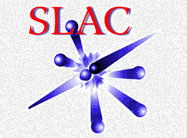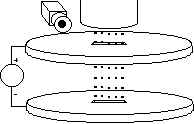 |
Search For Isolated Fractionally Charged Particles |  |
 |
Search For Isolated Fractionally Charged Particles |  |
Optimal Test Material for a Fractional Charge Search
Take in account the altered electronegativity of atoms with an attached fractional charge
- Chemistry of atoms are changed by an attached fractional charge
- Industrial chemical reagents will have had fractionally charged atoms removed as manufacturing impurities
- Geochemical and biological processes can also filter atoms
- Primordial materials are the safest places to look
- Terrestrial deposits where rare minerals collect are also possibilities
Possible test materials
- Carbonaceous chondrite meteorites
- Moon dust
- Fluorapatite
- Pegmatites and aptlites
- Evaporated ocean salts
- The same niobium used in the experiments of the Fairbank group
In order to test the ground solid material in a Millikan apparatus it must be put into the form of a liquid. A fluid suspension containing finely ground solids is superior to that of a dissolved solution because it reduces the possibility that the atom with an attached fractional charge will react or bind to the droplet ejector. Ideally the ground material should be made into a stable colloid. Since this was not found to be possible for some of the materials we are interested in we have developed ways to artificially stabilize and eject non-colloidal suspensions.
Silicone Oil
We used silicone oil for our initial experiments because it was an easy to eject, nontoxic, low vapor pressure, low viscosity fluid. Silicone oil, being a highly refined synthetic fluid, is not considered a good candidate material for containing atoms with attached fractional charges. The first experiments were performed primarily to verify the accuracy of the charge measurement technique. Silicone oil, being an easy to eject well characterized fluid, was used to establish the intrinsic measurement accuracy of our updated Millikan techniques without the complications involved in using multicomponent fluid drops. We are currently making the transition to testing fluid-particle suspensions.
Meteorite Suspension in Oil
The meteoric material must be fragmented to sizes small enough to remain in suspension and pass through the 10 - 20 micron diameter drop generator ejection aperture holes. This requires that we reduce the mean particle size to about 1 micron. This fragmenting was done in two steps:
First the meteorite, in this case a carbonaceous chondrite, was ground by hand with a conventional mortar and pestle.
Next these fragments which were in the tens of microns in diameter range were passed through a jet pulverizer (photo at right) which accelerates these particles using pressurized air to supersonic speeds and collides them with each other to break them up into submicron fragments.
These particles must next be dispersed in the carrier fluid. Very high shear is required to deagglomerate and thoroughly wet the particles. This mixing action was achieved using a rotary blade homogenizing mixer (photo at right). The carrier fluid for stable suspensions usually contains surfactants to coat the particles to prevent agglomeration.
The carrier fluid used was a commercial low viscosity mineral oil with 5 percent Castrol Motor oil added for its surfactant additives.
The meteorite dust and the carrier fluid was mixed for 20 hours and left to settle for 5 days after which the top half of the fluid was extracted. This settling time before use allows the larger unfragmented particles to settle out to the bottom of the fluid.
Meteorite suspension loaded into a microdrop generator ejecting 20 micron diameter fluid drops.
[SLAC home] [MPS home] [Hist] [Phys] [FCMat] [Apparat] [TestMat] [Microdrop] [Results] [Team] [Refs]
[MPSPhys] [MSPAppat] [MPSRefs]
January 8, 2001
Stanford Linear Accelerator Center
Website maintenance: erlee@SLAC.stanford.edu